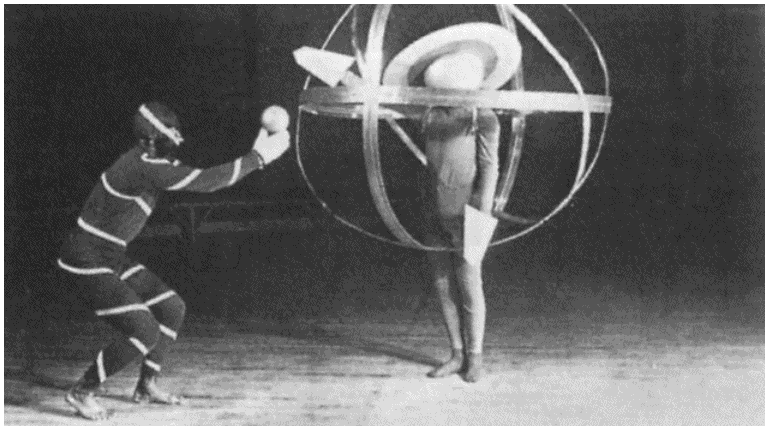
The First
Be-In ---
1952
John Cage and the
Untitled Event

John Cage's The Ruse of Medusa performance was still, in spite of its departure from the Bauhaus model, the production of a scripted play. It was on his visit [to Black Mountain College] in 1952 that he radically disrupted previous incarnations of performance and inaugurated a dispersal of attention and a radical fragmentation of narrative. By the time Cage returned, he was utilizing pseudo-chance compositional methods derived from parameters provided by the I-Ching. But it was faculty member M.C. Richards' translation of Antonin Artaud's The Theatre and Its Double, with its call for a medium of theatrical performance beyond the scriptures of literature, that provided most fertile ground for the 1952 'Event.'Cage and pianist David Tudor formulated an idea for a performance with multiple participants who would perform during various overlapping time segments totaling forty-five minutes. According to Cage, he proposed that Charles Olson and M.C. Richards read their poetry, student Robert Rauschenberg display his paintings and play records, and Merce Cunningham dance. Tudor was to perform on the piano, and Cage would read from a previously prepared lecture on Zen Buddhism. To Cage, the event represented the fairly specious possibility of events taking place without being causally related to one another, although he had in fact established strict time brackets and organized the event with particular temporal and location parameters.
The event went on as scheduled, with the addition of upside-down slides projected on tilted surfaces (a cruciform arrangement of Rauschenberg's 'White Paintings') to one side of the central concentric arrangement of chairs, which were organized as "a square composed on four triangles merging towards the centre, but not meeting." The seating arrangement allowed performers mobility throughout the audience seating, and followed Artaud's pronouncement that "the spectator, placed in the middle of the action, is engulfed and physically affected by it... immerse[d]... in a constant bath of light, images, movements and noises." Cage in this second event was mining other theatrical legacies, those as varied as Dadaist simultaneous performance and Shakespearean theatre-in-the-round, previously explored at Black Mountain college by the Light-Sound-Movement Workshop organized by Betty and Peter Jennerjahn in the late 1940s and revived by choreographer Katherine Litz and M.C. Richards in summers prior to the Cage event. The Jennerjahns, in collaboration with about a dozen college students and faculty, improvised short theatre pieces, sometimes "limited to a minute, or so," over projected slides, improvised music, and incorporating dance elements. M.C. Richards, in 1950, staged a production of Jean Cocteau's Marriage on the Eiffel Tower as theatre in the round, and over a decade earlier Schawinsky's 1938 production of Danse Macabre: A Sociological Study had likewise been staged with the audience centrally "on display." Yet unlike these precursors, Cage's "Event" eschewed extensive rehearsals and previously arranged scripting, costuming, music, and characterization.
The employment of a chance protocol in "Untitled Event," one of particular parameters (duration, assignment of specific tasks to performers, or an agreed-upon use of certain tools or instruments) governing the execution of the work, represented an attempt to sever experimentalism from determining factors such as artistic intention or argumentation. Cage broke friendship with Albers around the issue of chance, and Cage later reconstructed this argument as ratifying a uniquely American, as opposed to European, aesthetic, thereby pushing form beyond intention or determination.
--- From an Essay by Eva Diaz in
Starting at Zero:
Black Mountain College,
1933-1957
©2005 Arnoldfini/Kettle's Yard